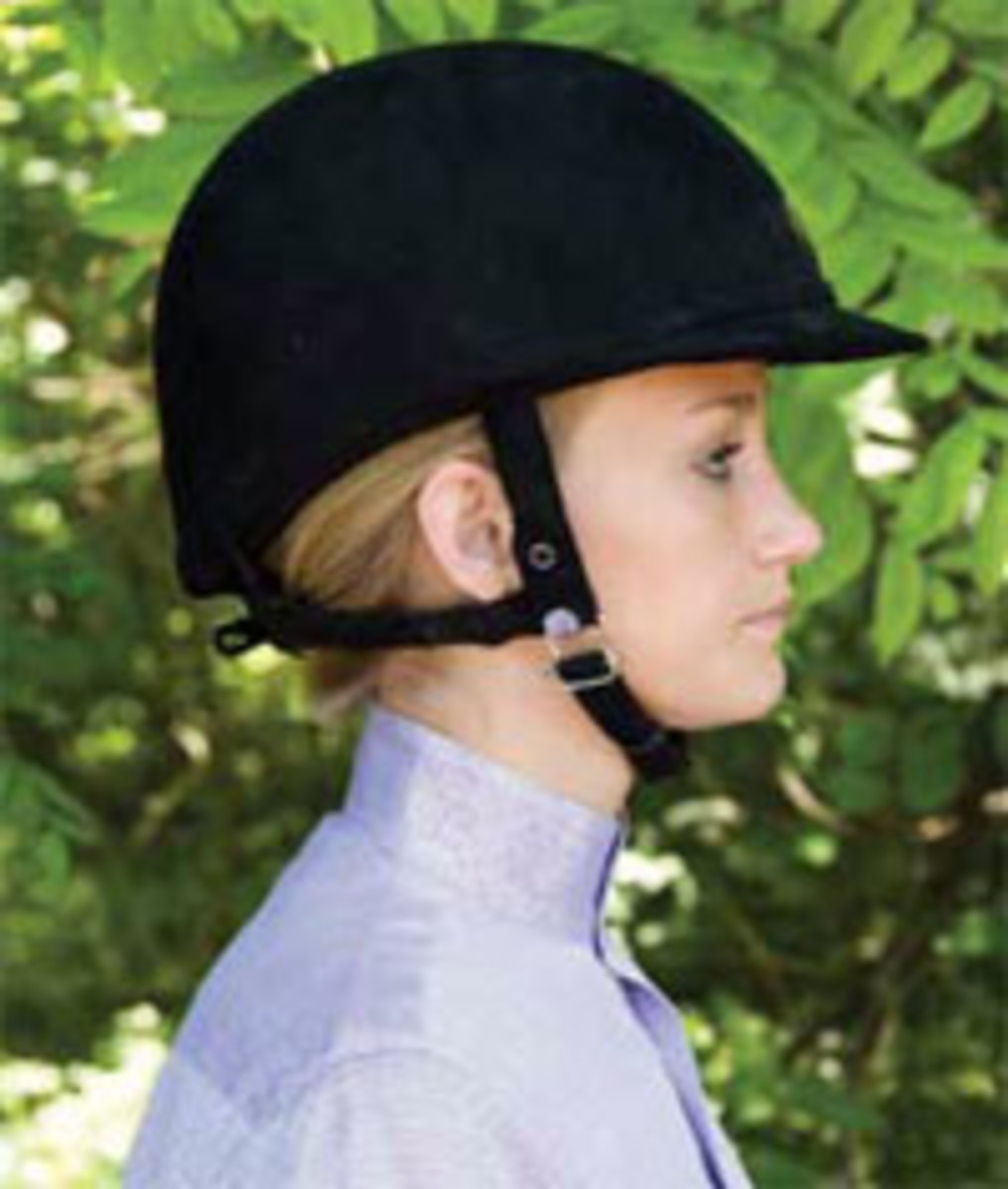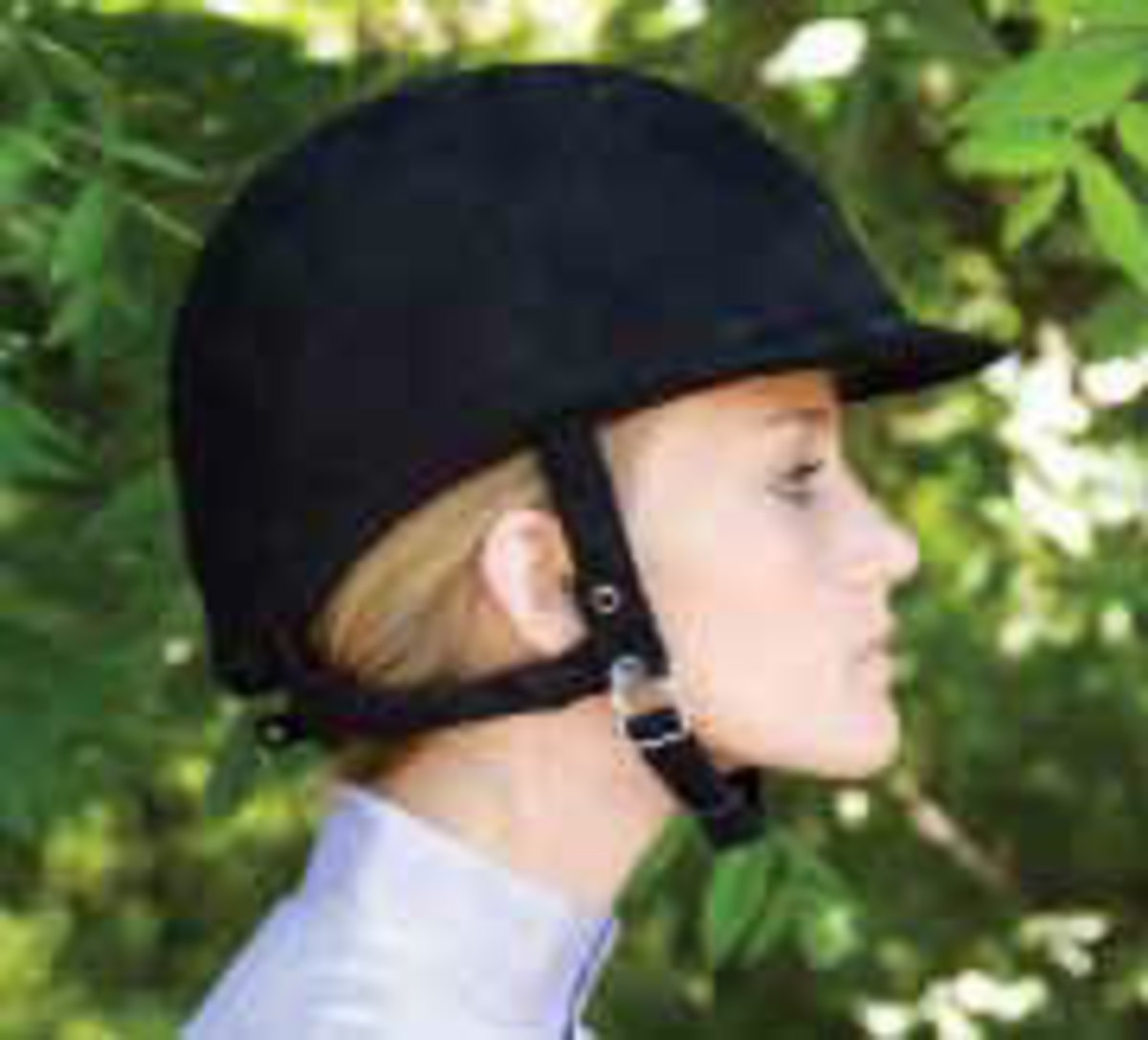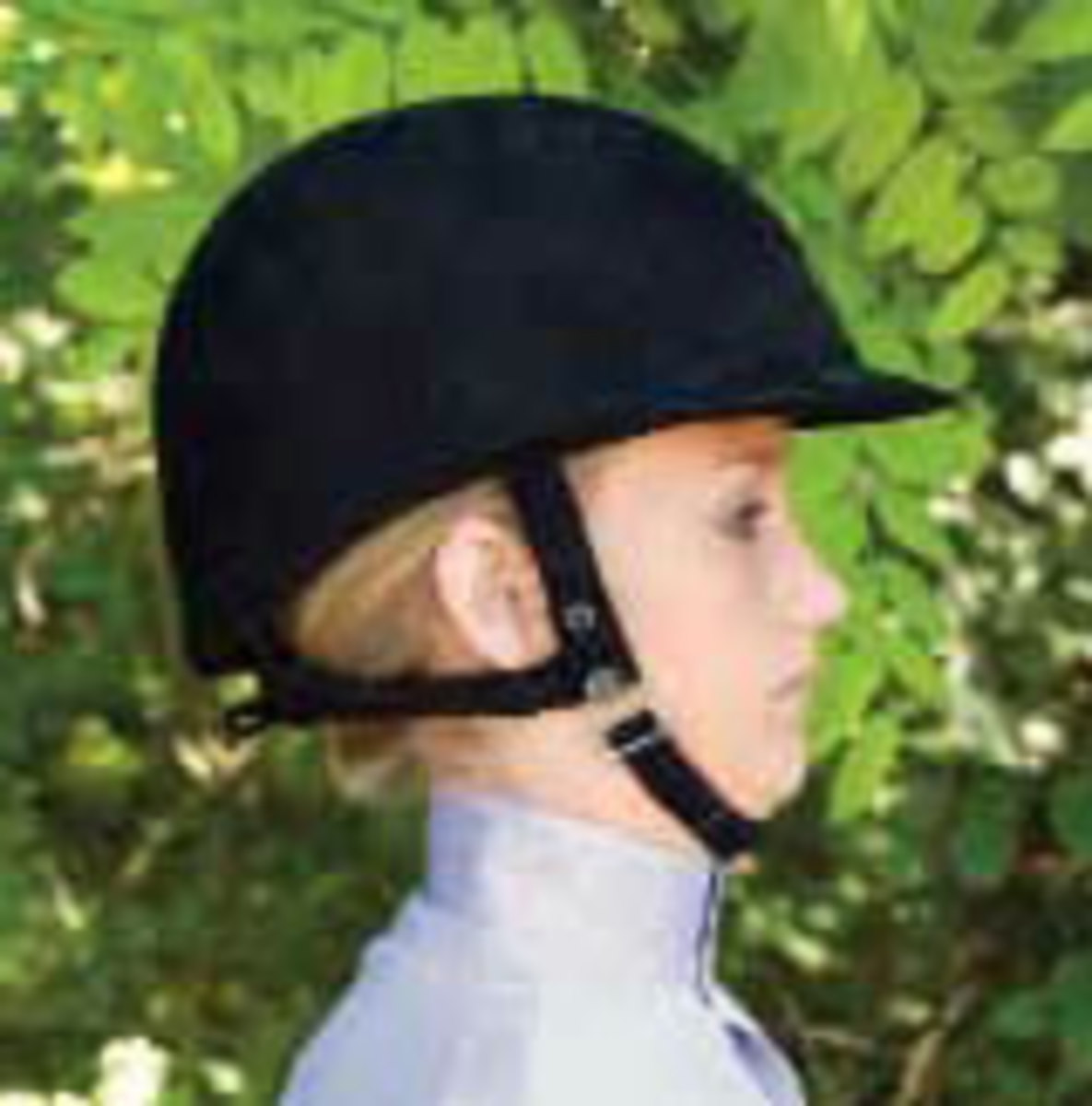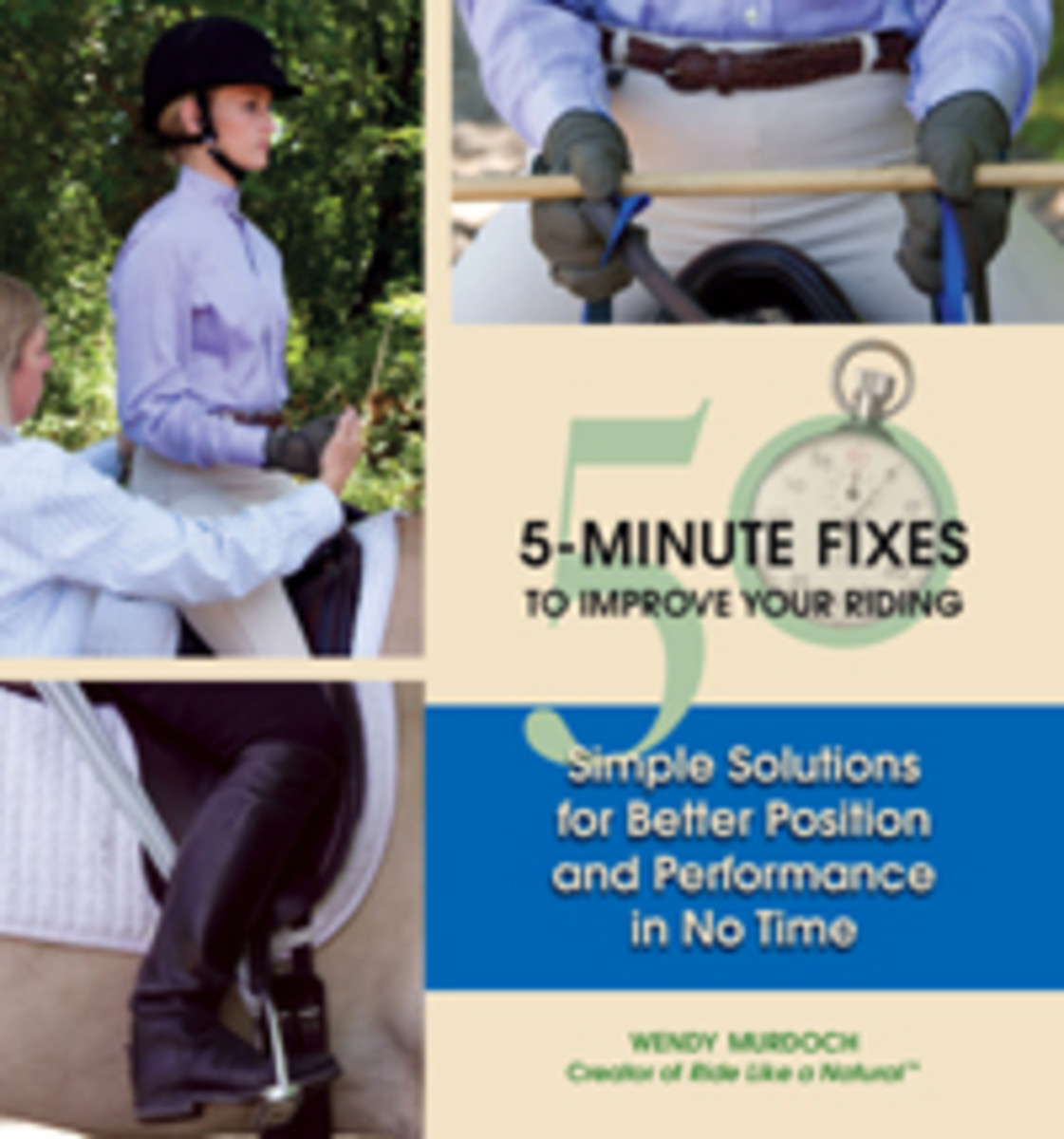Do you have trouble looking where you are going when riding? Find your neck is tense when you ride, or stiff afterward? Have difficulty sitting the trot? The solution may be all in your head. Here’s a quick tip for finding a good comfortable head position next time you ride.

Pay attention to your head–that 10- to 15-pound bowling ball at the top of your neck. That’s right, your head weighs as much as a bowling ball and you are carrying it around on top of your spine–5 to 6 feet above the ground–all the time. If your head is poorly balanced, your neck and back muscles have to work hard to keep from “dropping the ball.”
Good head alignment means that you use a minimum amount of muscular effort to hold up your head, allowing the skeleton to do most of the work. When your head is well-aligned front to back, you can lengthen through your spine all the way through the top of your head, thereby countering the downward force of gravity (fig. 1).
Poor head carriage requires more work than good head carriage. When you habitually carry the head forward or pulled back (in the horse, the equivalent of high carriage or overly tucked in) you inhibit ordinary movement such as turning to look where you are going on a jumping course or dressage test (figs. 2 and 3). In addition, your inability to lengthen upward creates a heavy, downward pressure, making you more like a sack of potatoes on your horse’s back than a good dance.

Exercise (On the Ground)
To find a good position slowly and gently turn your head side-to-side as you move it forward and back. Find the place where your head turns most freely.
How far down your spine can you sense the turning of your head? Do you notice movement only in your neck, or can you feel something happening between your shoulder blades or even lower in your spine? Is there any movement in your sternum?
Stop turning and notice that you breathe easier when your head is balanced. See if you can lengthen your neck so that the head moves slightly upward. Think of “pricking your ears” as if you were a horse.

As you lengthen through the neck, turn your head slowly again and find out if turning is easier. Do you sense or feel anything change in your seat when you lengthen your neck? If you are attentive you may feel your hips open and your seat deepen as you do this.
Whenever you feel “stuck” simply take a second to repeat this process to free your whole body.
Comparable Parts: The Head
Human: To state the obvious, your head contains your brain and most of your sensory organs: eyes, ears nose, and mouth. You might be able to feel all over your body but you can’t take in food through your toes. One of the major functions of the brain is to receive input regarding your balance, then make appropriate adjustments so you can stand, walk, run and ride. This certainly requires a lot of “internal” attention.
For most of us, this balancing act goes on “behind the scenes” without our being aware of it. Our nervous system constantly monitors where we are in space and makes sure we don’t succumb to gravity.
Horse: The horse’s head also contains most of his sensory organs–eyes, ears, mouth and nose–in addition to his brain. His head is about four percent of his overall body weight. In a 1,000-pound horse, we are talking about 40 pounds. The horse’s head hangs on a neck that sticks out horizontally out from the chest, which makes it much harder for him to balance than your head is for you.
To understand how much effort is required, grab a gallon of milk. Hold it horizontally away from your body at arm’s length. I guarantee you aren’t going to keep it there very long! Fortunately, the horse is designed to carry the weight of his head in this position, thanks to the strength of his nuchal ligament, which runs from the poll to the withers. It acts like the cable on a suspension bridge passively supporting the weight of the horse’s head.

For three more 5-minute fixes, see “15 Minutes to Better Riding” in the June 2010 issue of Practical Horseman magazine. To purchase a copy of this book visit www.HorseBooksEtc.com or www.horseandriderbooks.com.










